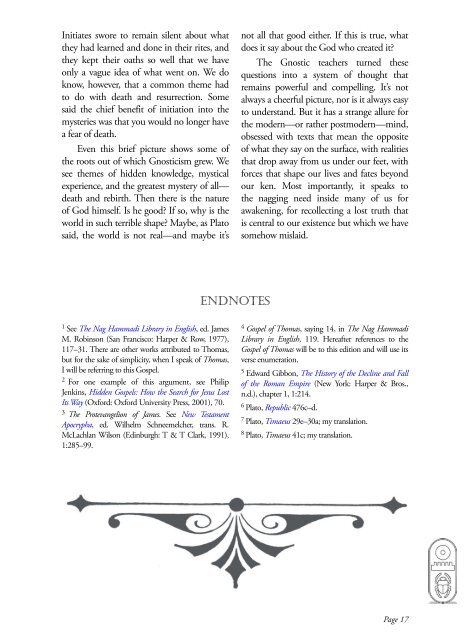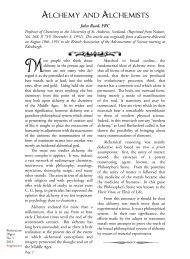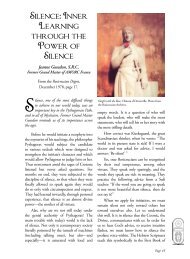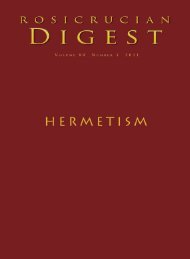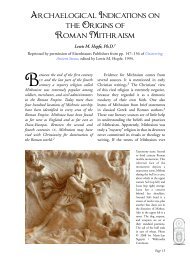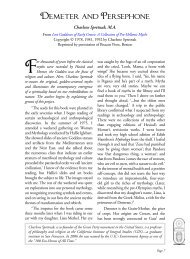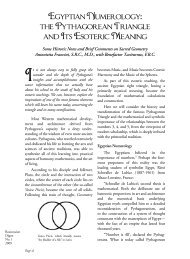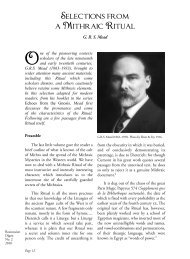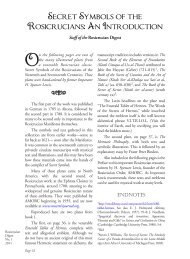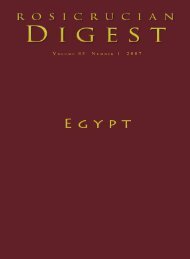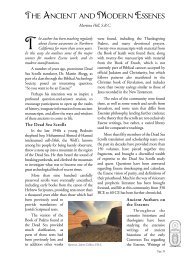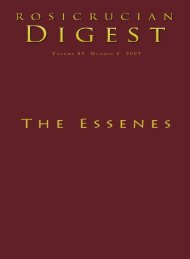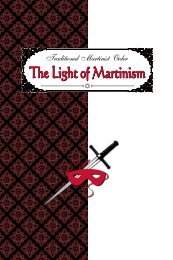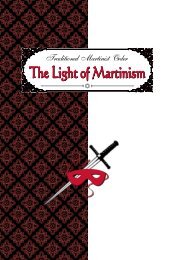Rosicrucian Digest Vol 89 No 2 2011 Gnosticism - Rosicrucian Order
Rosicrucian Digest Vol 89 No 2 2011 Gnosticism - Rosicrucian Order
Rosicrucian Digest Vol 89 No 2 2011 Gnosticism - Rosicrucian Order
Create successful ePaper yourself
Turn your PDF publications into a flip-book with our unique Google optimized e-Paper software.
Initiates swore to remain silent about what<br />
they had learned and done in their rites, and<br />
they kept their oaths so well that we have<br />
only a vague idea of what went on. We do<br />
know, however, that a common theme had<br />
to do with death and resurrection. Some<br />
said the chief benefit of initiation into the<br />
mysteries was that you would no longer have<br />
a fear of death.<br />
Even this brief picture shows some of<br />
the roots out of which <strong>Gnosticism</strong> grew. We<br />
see themes of hidden knowledge, mystical<br />
experience, and the greatest mystery of all—<br />
death and rebirth. Then there is the nature<br />
of God himself. Is he good? If so, why is the<br />
world in such terrible shape? Maybe, as Plato<br />
said, the world is not real—and maybe it’s<br />
not all that good either. If this is true, what<br />
does it say about the God who created it?<br />
The Gnostic teachers turned these<br />
questions into a system of thought that<br />
remains powerful and compelling. It’s not<br />
always a cheerful picture, nor is it always easy<br />
to understand. But it has a strange allure for<br />
the modern—or rather postmodern—mind,<br />
obsessed with texts that mean the opposite<br />
of what they say on the surface, with realities<br />
that drop away from us under our feet, with<br />
forces that shape our lives and fates beyond<br />
our ken. Most importantly, it speaks to<br />
the nagging need inside many of us for<br />
awakening, for recollecting a lost truth that<br />
is central to our existence but which we have<br />
somehow mislaid.<br />
ENDNOTES<br />
1<br />
See The Nag Hammadi Library in English, ed. James<br />
M. Robinson (San Francisco: Harper & Row, 1977),<br />
117–31. There are other works attributed to Thomas,<br />
but for the sake of simplicity, when I speak of Thomas,<br />
I will be referring to this Gospel.<br />
2<br />
For one example of this argument, see Philip<br />
Jenkins, Hidden Gospels: How the Search for Jesus Lost<br />
Its Way (Oxford: Oxford University Press, 2001), 70.<br />
3<br />
The Protevangelion of James. See New Testament<br />
Apocrypha, ed. Wilhelm Schneemelcher, trans. R.<br />
McLachlan Wilson (Edinburgh: T & T Clark, 1991),<br />
1:285–99.<br />
4<br />
Gospel of Thomas, saying 14, in The Nag Hammadi<br />
Library in English, 119. Hereafter references to the<br />
Gospel of Thomas will be to this edition and will use its<br />
verse enumeration.<br />
5<br />
Edward Gibbon, The History of the Decline and Fall<br />
of the Roman Empire (New York: Harper & Bros.,<br />
n.d.), chapter 1, 1:214.<br />
6<br />
Plato, Republic 476c–d.<br />
7<br />
Plato, Timaeus 29e–30a; my translation.<br />
8<br />
Plato, Timaeus 41c; my translation.<br />
Page 17


